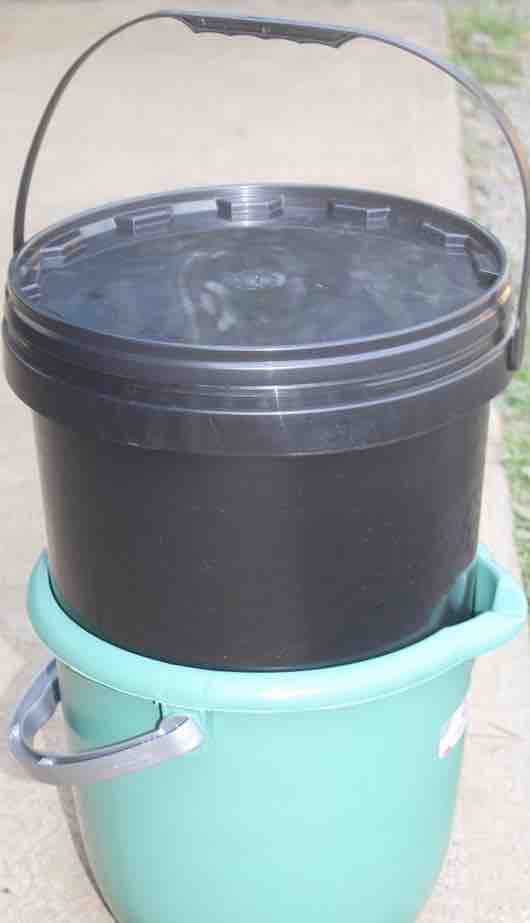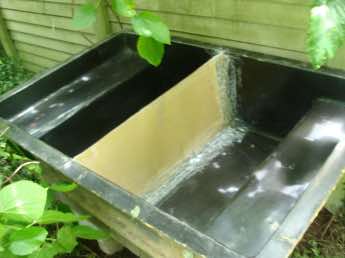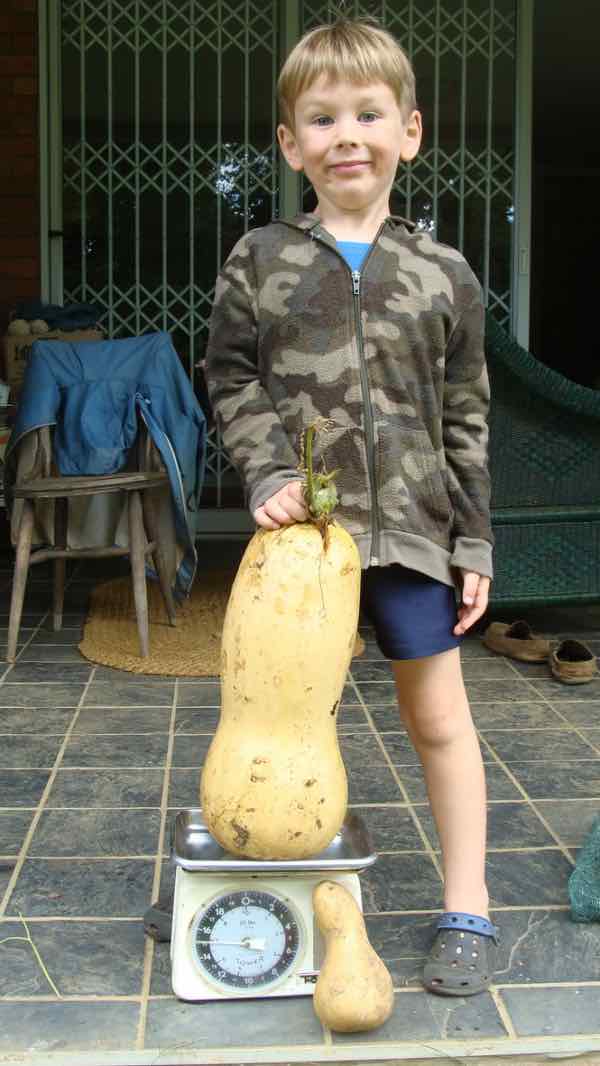- Bernard Preston homepage
- Worm farms
- Make Your Own Wormery
Make your own wormery
Make your own wormery since composting happens so much faster.
It could be as large as this old fiberglass mold, or the size of a 25-litre bucket. It must have a waterproof lid to keep the rain out, though remember they must have air to breathe; keep it loose.
Old bathtubs with a cover are often used; rain and rats must be kept out.

- Two buckets as shown, the larger with a lid. Drill several holes in the bottom of the big one in a pattern near the centre so the vermileachate will drip into the smaller one.
- Start with a couple inches of compost from your pile which acts as a bedding-material for the worms.
- Add perhaps 200 worms that you have bought[1].
- Empty your kitchen compost-bin on top of the worms. Do not compact it; they must have sufficient air to breathe.
- Cover the surface with something like cabbage-leaves or cardboard; they like to be in the dark.
- Add a couple teaspoons of wood-ash or lime periodically; the wormery should be slightly alkaline.
- Keep adding more food from your compost-bin.
It's just a small basic worm farm.

Every wormery must have a hole in the bottom for the leachate to leak out into another bucket.
Here are several reasons to start a wormery.
They multiply much faster than ordinary earthworms, decomposing your kitchen and garden-waste. Every month they double in number in ideal conditions. Confined to a limited space they can only indulge in fornication and food.
- Bernard Preston homepage
- Worm farms
- Make Your Own Wormery
In the vermicompost they add special organic chemicals that enhance your plants' ability to absorbe minerals and water.
They will devour your kitchen-waste with relish. Worms consume their own weight in food every day.
Added to your compost-heap they will speed up the process of humification.
It is a totally organic and natural way to manage your garden. You will not have to buy fertiliser.
Make your own wormery since composting happens so much faster. The turn-around time is markedly decreased and, should you decide to toss butternut and pumpkin seeds into the heap in Spring, they will simply take off.
This monster is not atypical. The humic-acid formed in your compost
heap facilitates the absorption of minerals and water with the result
that plants thrive in a way you have not before seen.
Just compare it with the fairly typical butternut bought from the supermarket. More important, the taste and nutrients are enhanced beyond belief; just try growing vegetables once you make your own wormery.
There are only two things that worms really do not like; too much water and not enough air. You will read that you must not add onions or citrus, for example. It will all get turned into compost, only it takes a little longer. Do not fuss is my recommendation; they are very hardy.
Some cow or horse-manure is ideal.

Make your own wormery
Make your own wormery because it is so easy and inexpensive and the leachate adds so much oomph to your plants.
To begin your journey you need only two inexpensive items. A large bucket with a lid, and another that is smaller but very sturdy to collect the worm-wee.
Your worms will double in number every month. So, after four-weeks you will have 400 and after 90 days about 1600. You could then make another farm.
Newsletter
Our newsletter is entitled "create a cyan zone" at your home, preserving both yourself and Mother Earth for future generations; and the family too, of course. We promise not to spam you with daily emails promoting various products. You may get an occasional nudge to buy one of my books.
Here are the back issues.
- Lifestyle and ideal body weight
- What are ultra-processed foods?
- Investing in long-term health
- Diseases from plastic exposure
- Intensive lifestyle management for obesity has limited value
- A world largely devoid of Parkinson's Disease
- The impact of friendly bacteria in the tum on the prevention of cancer
- There's a hole in the bucket
- Everyone is talking about weight loss drugs
- Pull the sweet tooth
- If you suffer from heartburn plant a susu
- Refined maize meal and stunting
- Should agriculture and industry get priority for water and electricity?
- Nature is calling
- Mill your own flour
- Bake your own sourdough bread
- Microplastics from our water
- Alternative types of water storage
- Wear your clothes out
- Comfort foods
- Create a bee-friendly environment
- Go to bed slightly hungry
- Keep bees
- Blue zone folk are religious
- Reduce plastic waste
- Family is important
- What can go in compost?
- Grow broad beans for longevity
- Harvest and store sunshine
- Blue zone exercise
- Harvest and store your rainwater
- Create a cyan zone at your home
Every few months tip the whole bucket out into your compost heap, keeping back a few hundred worms and start all over again.
That will contain the humus that is your ultimate aim, but also many tiny wrigglies and eggs that will give your compost heap a lot of oomph; it too will then become a wormery.
The vermileachate will drip into the bottom bucket; dilute it and pour it onto your plants for amazing results. Avoid using it on small seedlings except after rain.
Remember the worms need air, and too much water may drown them. Periodically use a small fork to turn the compost, letting air deep into the mixture. The material in the bucket needs to be damp but not sopping.
Some folk add cardboard to their worm-farms to increase the carbon content.
Have fun.
Compost heap on steroids
In the gut of a worm the temperature is always perfect, the water content is just right and the carbon-nitrogen ratio is correct. Like us they too are full of microbes and their microbiome is likely to be a lot more happy than that of a human; nobody feeds them toxic chemicals and medication.
It takes about 6 months for a compost pile to digest your kitchen-waste properly, but that happens in the gut of a worm in one day churning out the most beautiful humus.
A worm-farm is like a compost heap on steroids!
I don't believe it is extreme to state that most agricultural land has been overgrazed; and our backyard patches too. Your wormery along with the compost-heap should be looked upon as two of the healers of the earth.
Did you find this page interesting? How about forwarding it to a friendly book or food junkie? Better still, a social media tick would help.
- Bernard Preston homepage
- Worm farms
- Make Your Own Wormery
Address:
56 Groenekloof Rd,
Hilton, KZN
South Africa
Website:
https://www.bernard-preston.com